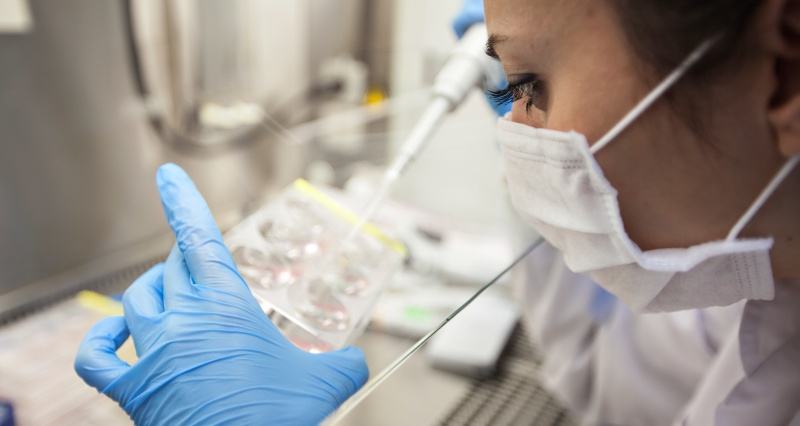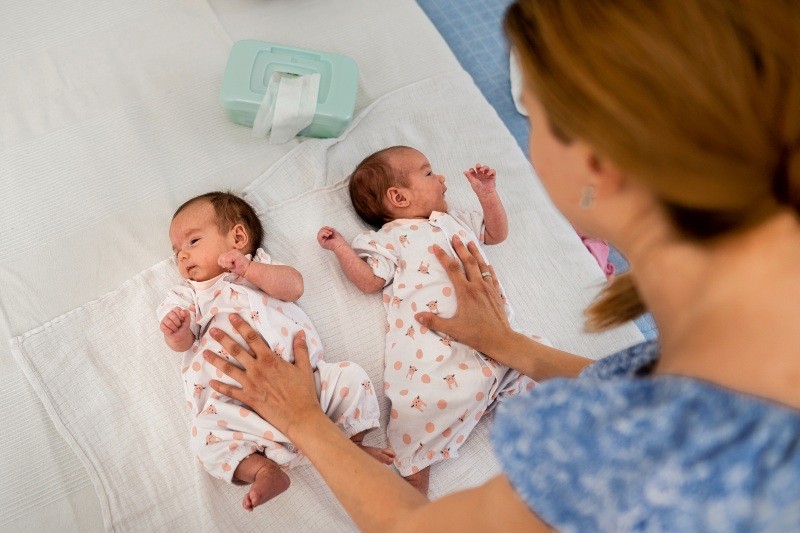- Home
- Mind & body
- Your guide to understanding in vitro fertilisation (IVF)
At CBHS we help you manage your health challenges. We believe in offering you the services, support and tools you need to live your best life.
Our Better Living Programs are available to support eligible members towards a healthier lifestyle. Each Better Living Program is subject to its own eligibility criteria.
Contact us for more information and to confirm your eligibility for a program.
Your guide to understanding in vitro fertilisation (IVF)

For a lot of couples, the journey to parenthood isn’t always easy. And there are many reasons why natural conception may not be possible – but that’s where ‘assisted reproductive technologies’ like, in vitro fertilisation, or IVF, can help.
In vitro fertilisation, or IVF, is one of many scientific techniques that can be used to overcome fertility issues and help a person conceive. The IVF process is based on fertilising the eggs with sperm under lab conditions. The aim is to create a healthy embryo which can then be transferred into the womb five days after the eggs have been collected.
“Did you know? One in nine Australian couples of reproductive age experience fertility issues.”
If you’re having trouble falling pregnant, you’re not alone. In Australia, one in nine couples have a problem conceiving naturally. The reasons vary – and in many cases, not always clear. But for every two in five couples, infertility may be caused by a sperm issue. However, in another two in five couples, the problem is connected to a woman’s reproductive system.
When should you consider IVF?
You’re not considered to have fertility problems until you’ve been trying to fall pregnant for 12 months. If you’re over 30, the general guidance is that you should wait for at least six months before seeking help. However, if you’re in your early 40s, you may wish to speak with a fertility specialist sooner rather than later. This will also depend on your individual family goals.
When you’re considering IVF, it’s important to remember there are also other fertility treatments available such as hormone medications that can stimulate ovulation. On average, a woman has about a one in five chance of becoming pregnant and having a baby in each IVF cycle. The chance of success varies with age, but it’s higher for women younger than 35 and lower for women over 40. By age 44, the chance of success is less than 1 in 10.
You might want to think about IVF if you or your partner has one of the following conditions:
- Low sperm count
- Problems with ovulation due to conditions like polycystic ovary syndrome
- Fallopian tube issues
- Endometriosis.
You might also consider IVF if you have a serious genetic condition you don’t want to pass on to your children. In these cases, you may choose donor sperm or donor eggs. In other cases, men or women who have cancer may freeze their sperm or eggs before they have radiotherapy or chemotherapy. These frozen sperm or eggs can be used in IVF.
If you’re thinking about trying IVF, your first step is to book an appointment with your GP. They’ll be able to provide you with information and refer you to a specialist if it’s necessary.
“On average, in each IVF cycle, you have one in five chance of falling pregnant and having your baby.”

What happens in the IVF process?
The in vitro fertilisation process is a comprehensive approach to conception. We’ve gathered information for you based on the Pregnancy, Birth and Baby website and outlined the steps below:
- Ovary stimulation
You’re prescribed a series of fertility hormone injections that will stimulate your ovaries to produce multiple eggs. A woman usually only produces one egg each menstrual cycle.
- Egg collection
Your eggs are then collected using a fine needle, while you’re under light sedation.
- Egg fertilisation
Sperm is collected to fertilise the eggs under lab conditions. Successfully fertilised eggs are grown in an incubator in the laboratory. This process ideally results in healthy embryos.
- Embryo transfer
One or two of the healthy embryos are then transferred to the woman’s womb in the hope that they’ll successfully implant for a positive pregnancy result. If there are any healthy embryos left, these are frozen in case they’re needed later.
- Pregnancy test
The hopeful parent-to-be will then take a pregnancy blood test two weeks after the embryo transfer to confirm if it resulted in a pregnancy.

Managing your emotions while going through IVF
Embarking on a journey towards parenthood is an emotional time even when natural conception is possible. So, when an assisted reproductive method like IVF is part of this journey, the emotional stakes can be higher.
So, if you’re considering IVF, it’s important to keep in mind the emotional toll the process can have on you and your partner. It’s common to feel a range of emotions during the IVF process, particularly when you’ve had several unsuccessful cycles. You might feel a sense of hopelessness or despair. It’s also common to feel a sense of overwhelm due to information overload and to struggle making decisions.
If you’re already in the middle of an IVF journey and the rollercoaster of emotions are having an impact on your life, it might be time to seek help. If you have concerns about your mental health, it’s important that you speak with your GP
for guidance and support. They can assess your emotional health, possibly prescribe some medication if necessary and refer you to a mental health professional.
You can also reach out for phone support. There are several organisations you
can access from the comfort of your own home.
Lifeline 13 11 14
Beyond Blue 1300 22 46 36
SANE Australia 1800 18 7263
You can read more about the emotions you may experience when going through IVF or the connection between depression and IVF on the Centre of Perinatal Excellence website.
How much does IVF cost?
Many IVF clinics charge per IVF cycle so your costs will depend on how many cycles you choose to have. There are also charges for diagnostic tests, some medications and theatre fees that may not be in the initial quote. IVF can cost up to several thousand dollars, even with private health insurance and the Medicare rebate.
To reduce some of the high costs that can be associated with IVF, it’s a good idea to register for the Medicare Safety Net. The Medicare Safety Net can help to lower your out-of-pocket medical costs for out-of-hospital services. You won’t need to register if you’re single. And if you register as a family or couple, Medicare will combine your medical costs which means you could reach the threshold faster.
“You can lower some of the out-of-pocket IVF expenses you may incur by registering for the Medicare Safety Net.”
Continuing your IVF research
There are plenty of online resources you can access when you’re looking for more details on IVF.
Here’s a small selection:
- Becoming parents with IVF at the Raising Children Network
- Improving your fertility at Your Fertility
- Medicare services for conceiving, pregnancy and birth at the Department of Human Services
- The Pregnancy, Birth and Baby helpline on 1800 882 436 is available from 7am to midnight, seven days a week.

Helping you on your journey to parenthood
If you’re experiencing challenges with starting your family naturally, remember you’re not alone. Even as you read this blog, one in every nine Australian couples of reproductive age are in the same position as you. That’s where fertility treatments like IVF can restore hope.
Whether you choose IVF or another assisted reproductive method, remember to be as patient with yourself as possible. If you’re feeling overwhelmed during the treatment, before or after, remember to reach out for support.
Embarking on a more medical approach to conception might feel more emotionally taxing than natural conception. That’s why the first step to parenthood begins when you’re ready.
For more helpful articles on fertility, conception and pregnancy, check out our Pregnancy and birth section.
All information contained in this article is intended for general information purposes only. The information provided should not be relied upon as medical advice and does not supersede or replace a consultation with a suitably qualified healthcare professional.
Sources
https://www.yourfertility.org.au/everyone
https://genomemedicine.biomedcentral.com/articles/10.1186/s13073-017-0413-5
https://www.cope.org.au/planning-a-family/happening/
https://www.pregnancybirthbaby.org.au/when-to-consider-ivf
https://www.cope.org.au/planning-a-family/happening/mental-health-and-ivf/depression-and-ivf/
https://www.cope.org.au/planning-a-family/happening/managing-emotions-through-ivf/
Health and wellbeing
programs & support
You Belong to More with CBHS Hospital cover:
- Greater choice over your health options including who treats you
- Get care at home with Hospital Substitute Treatment program
- Free health and wellbeing programs to support your health challenges
Live your healthiest, happiest life with CBHS Extras cover:
- Benefits for proactive health checks e.g. bone density tests, eye screenings
- Keep up your care with telehealth and digital options
- Save on dental and optical with CBHS Choice Network providers
